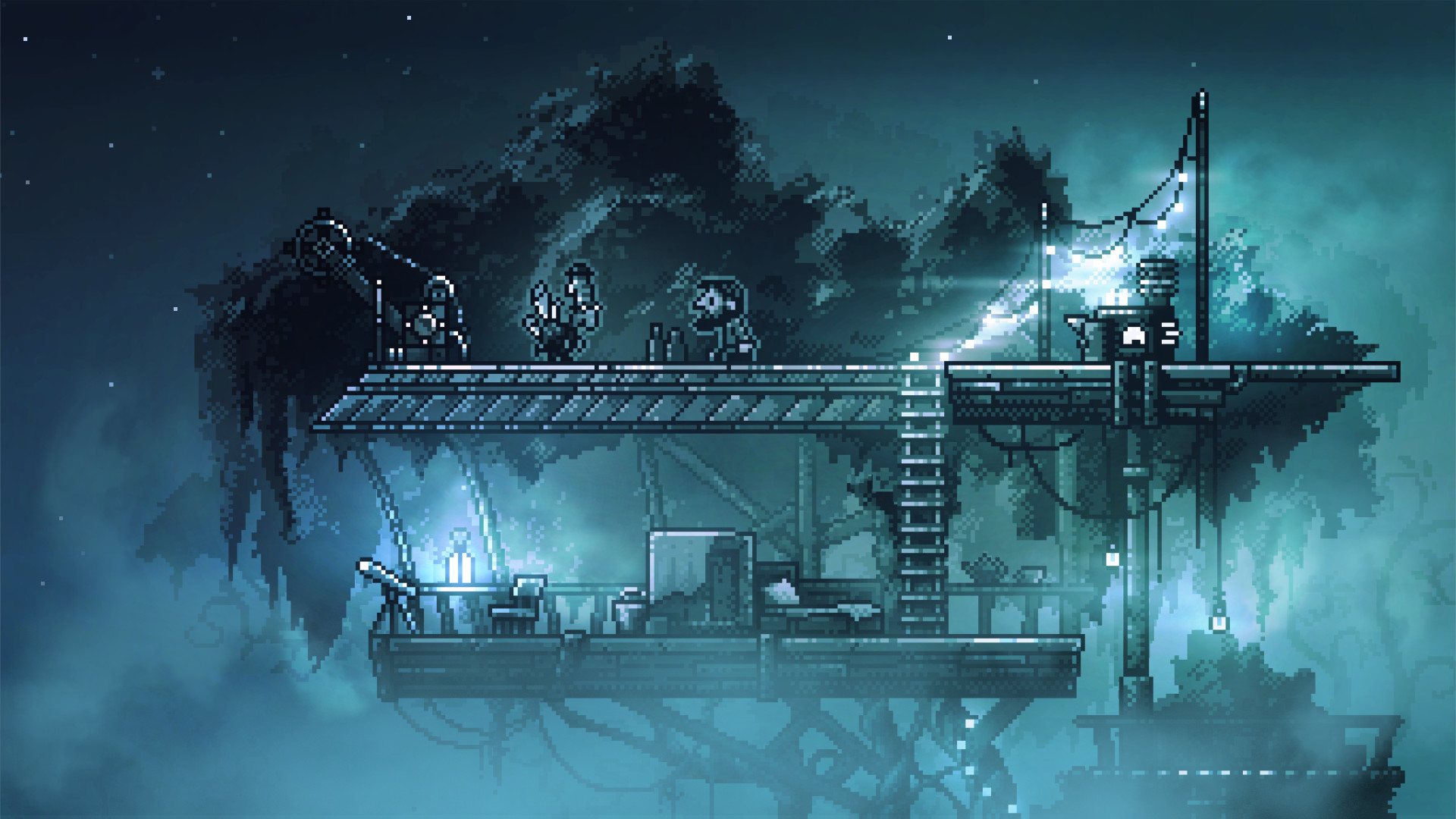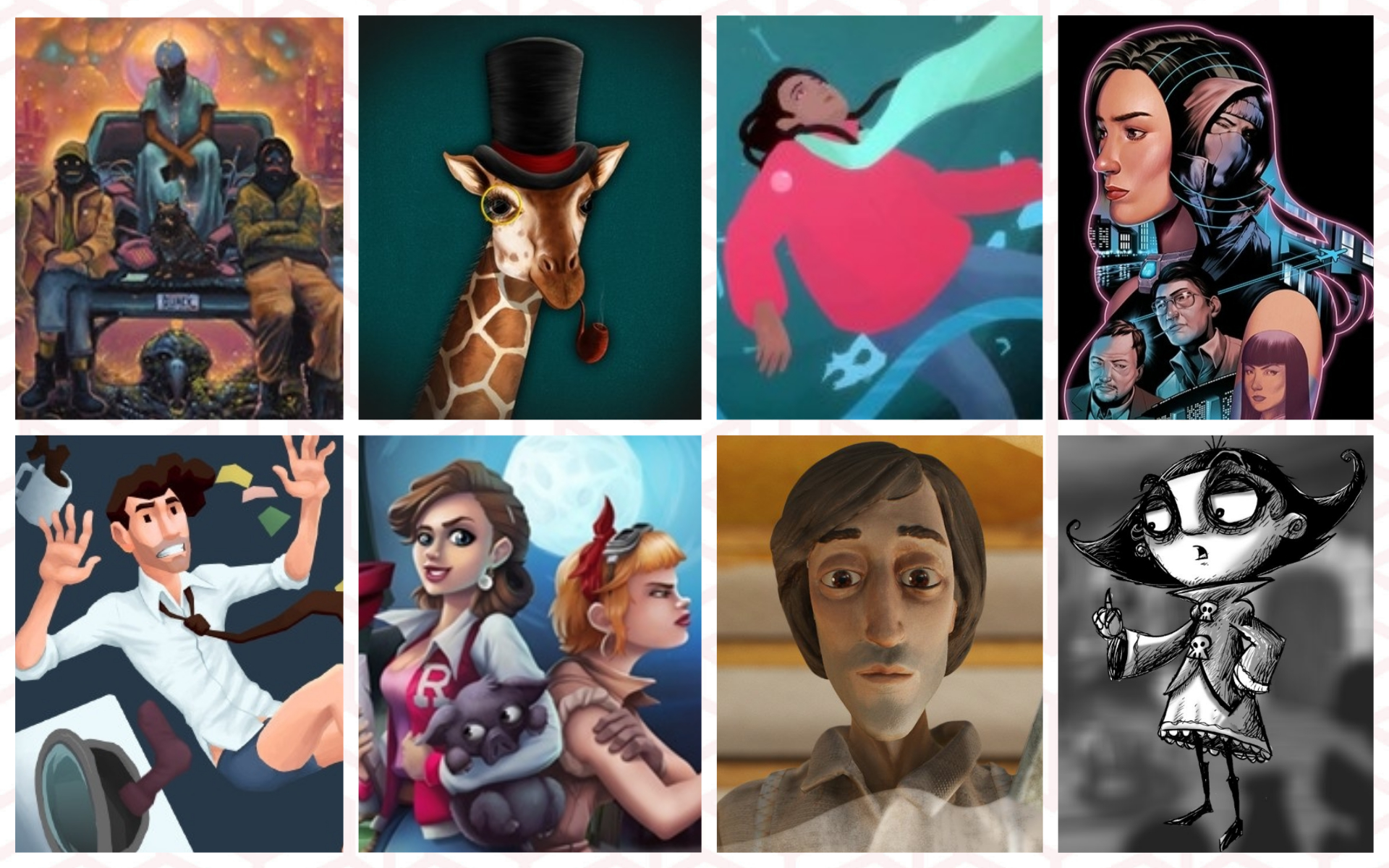Wildfrost Review (Switch) – Frost Smitten
The two-person team-up in Deadpan Games and Gaziter have been working together remotely on Wildfrost since March 2020. It’s an impressive feat for the pair, as they’ve created an in-depth card-battling game with a roguelike element that makes it infinitely replayable. With Will Lewis from Deadpan Games working on the Programming & Design and Gaziter on the Art & Design, it’s safe to say they’re a winning combo.
I’m not someone who’s used to playing card games. Outside of The Witcher 3’s game of Gwent, the prospect of learning the intricacies of most deckbuilding games and walking away victorious has always been daunting. However, Wildfrost just exuded finesse and style in its trailer and I was excited for where ever the game would take me – and it was quite the journey.
Eye of the Storm
The story of Wildfrist is told through journal pages that you unlock as you progress through the game. As this is a roguelike, the progression comes in the form of the challenges you complete and your home base village of Snowdwell is upgraded (more on all of this later). A snowy storm ravages the land – forcing the world to enter an eternal winter as the sun freezes over. This forces different tribes to retreat to the village of Snowdwell to band together and reach the Sun Temple to rid the storm once and for all.
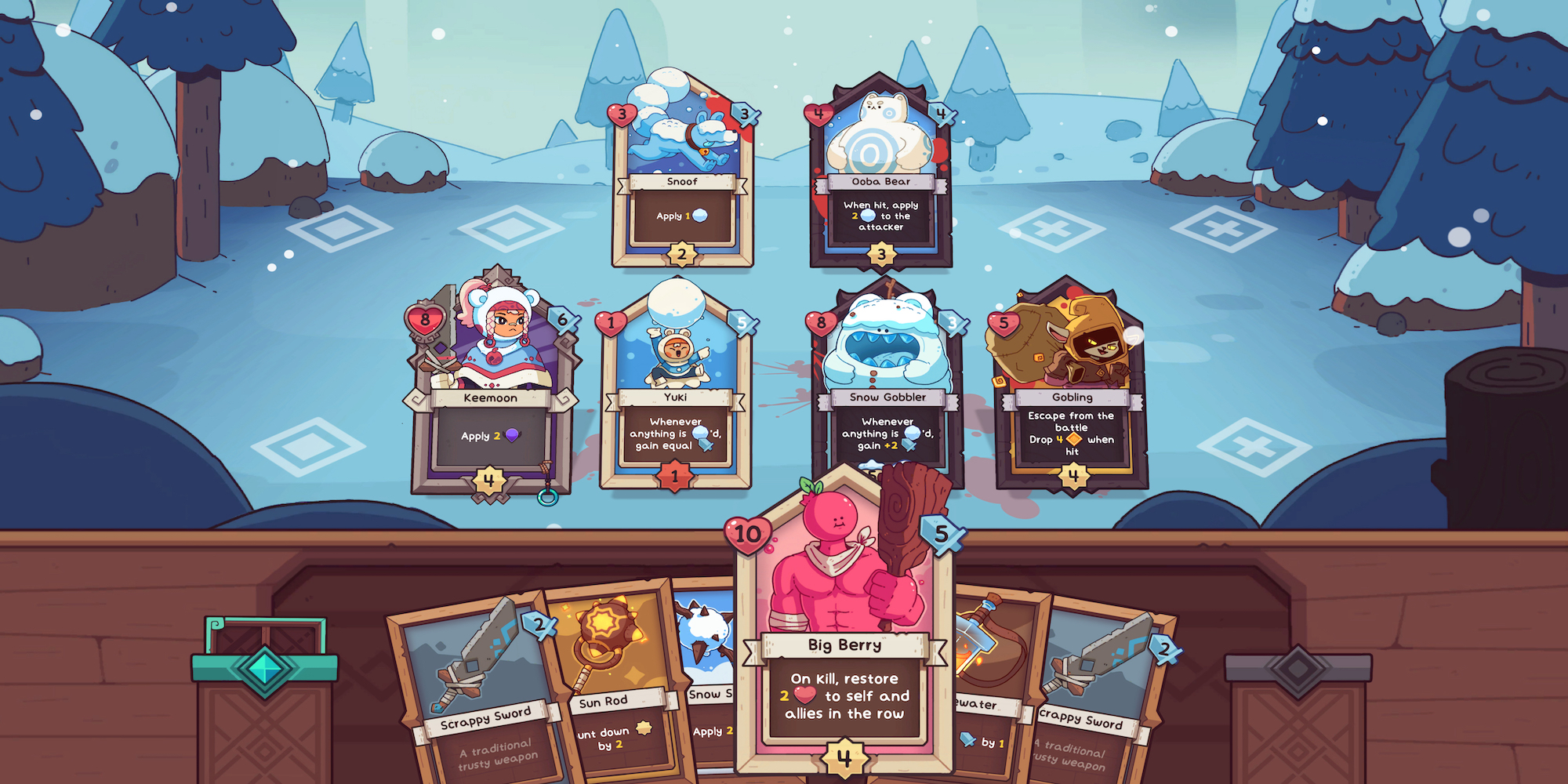
In true roguelike fashion, the end isn’t necessarily straightforward as there’s a hidden way of rolling credits. The journal only has a few pages, but they’re spread out fairly through the course of your progression. They’re great at filling out the lore, from the tribes to the events of the world; although I wished there was more overall, I got a good sense of the world.
The characters you meet along the way (mainly the townsfolk) are interesting in design, but outside of that, they don’t detail the world further. I do want to preface that these are some personal caveats to the story, but it’s from a yearning of wanting more because I felt so invested in what Wildfrost had presented. With all that said, the story isn’t necessarily what’ll keep you moving forward as the gameplay is a separate deceptively tactile and fierce card battle game.
Pick A Card…
To start the game, you’ll choose a leader – in the form of a card – from the Snowdwellers tribe. First tip, don’t name them! They’ll be dead in the next few minutes and onto the next leader which plays into the roguelike element. As you progress, you’ll unlock two other tribes – Shadowmancers and Clunkmasters. You’ll pick one of three three random leaders to choose your run, all with their own health and attack points and stats – this goes for every card in the game.
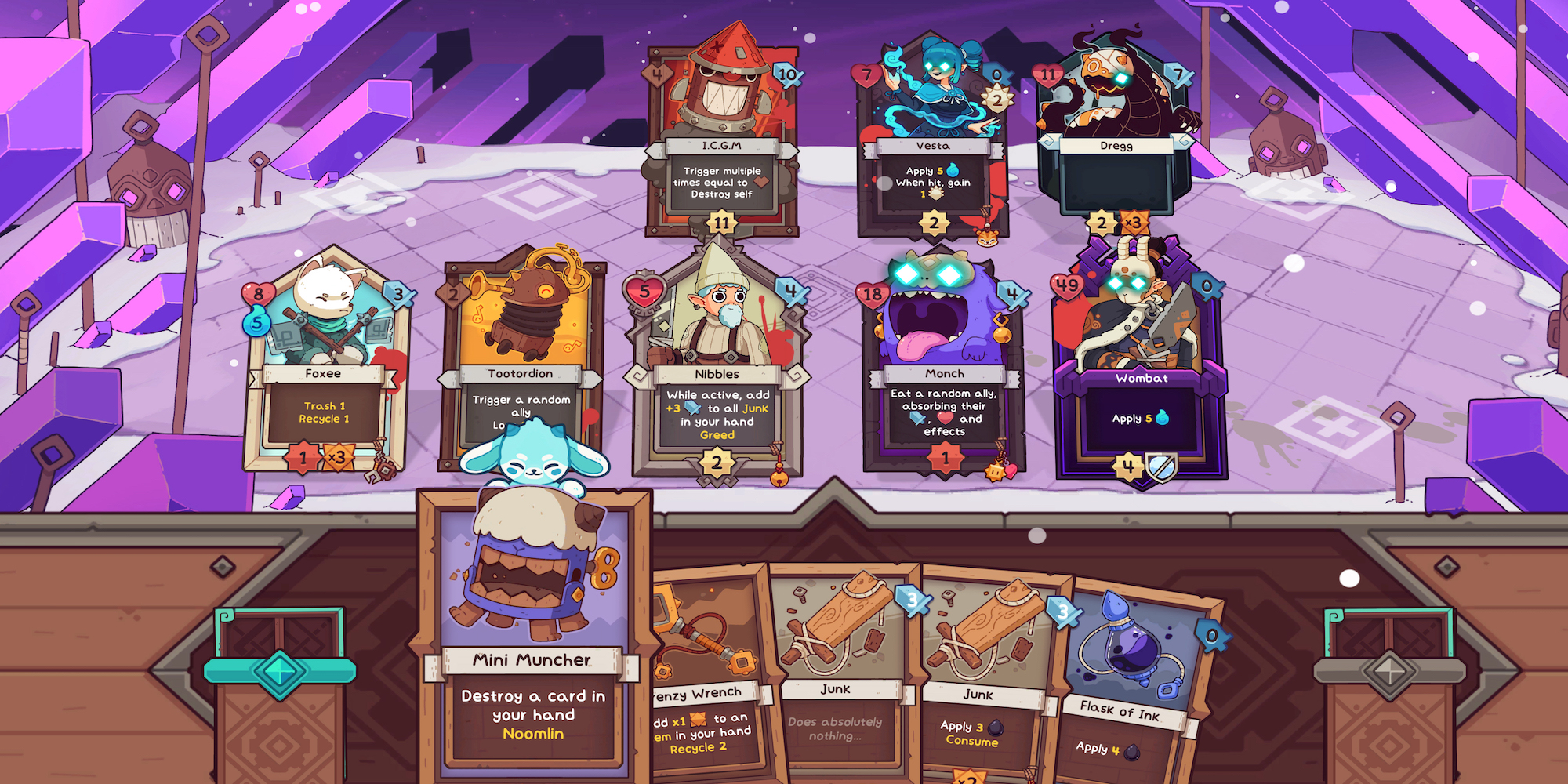
High damage but low health or vice versa, the ability to summon a second attacking card, or stat buffs that’ll aid in battle e.g. receiving shield on damage etc. Your leader will be the first drawn card in every battle, they also need to be the last one left standing so you don’t fail your run. Each tribe have their own strengths and weaknesses, but Snowdwellers being the first playable tribe is a double edge sword. They’re an aggressive deck that looks to cause damage as opposed to defending.
This initially plays well with the main mechanic that dictates the flow of battle. Every card has a different set countdown that ticks down per turn, when it goes to 0 they’ll attack. The battlefield is laid out into two rows of three on each side, and attacks from the countdown will land on whoever is at the front. As a method of defence, you can freely move your played cards in whatever position without using a turn, which is subtly one of the most important moves to implement in your strategy.
…Any Card
I was quick to go all out on damage as the Snowdwellers. I would use every attack card and try to tank damage but this only got me so far. Soon after I learnt the importance of applying snow. These are item cards that artificially add more to their countdown making it longer for the card to attack. It helps you dictate the fight to an extent, but receiving damage is inevitable so like Sly Stallone it’s all about learning to get hit and keep moving forward.
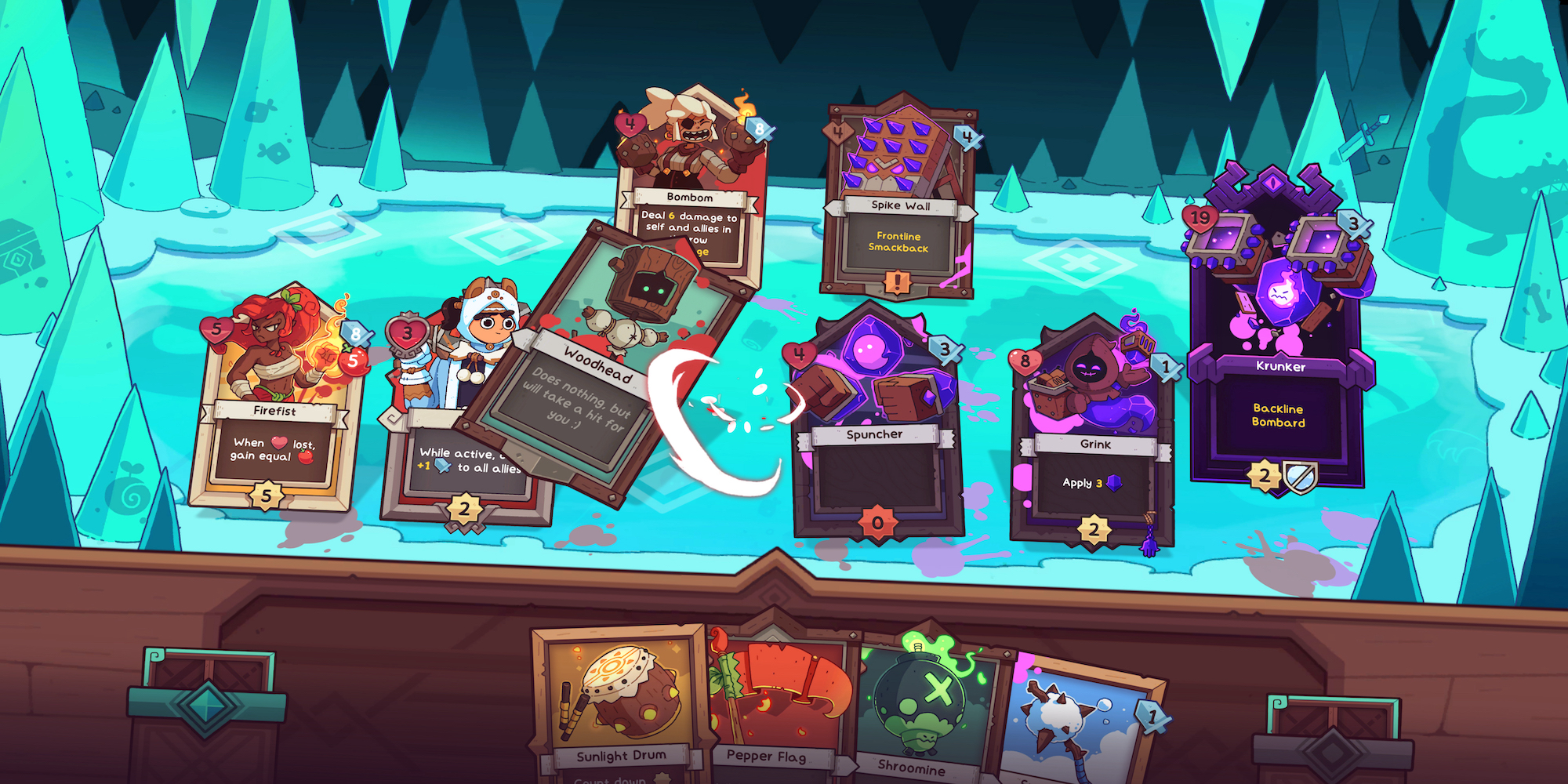
I mentioned that being a Snowdweller is a double edge sword and that’s because offensive in this game can only take you so far. The true power of Wildfrost and the overall depth is learning the synergy of your constantly changing deck. Stacking abilities and combo-ing attacks through patience and defence is really where the game shows its formidable strength in being a fantastic tactical RPG based around deckbuilding.
The Shadowmancers’ strengths are conjuring up discardable allies to do your bidding, whilst the Clunkmasters are proficient with their item cards which help stack attacks and defence. It’s a lot to get your head around and even after my hours in the game, I’m by no means good. It’s deceptively difficult and I’m still learning how to be consistent, even if the RNG of enemies and the cards I get may not end up in my favour. The challenge and the open ended parameters of being successful makes Wildfrost so addictive to play, even after the hours I’ve put in -I’m bad at it. I never blame the game, but rather click on to where I made my mistake and go again.
House of Cards
Progression does make the game slightly easier, but it’s not the answer to your problems if you’re stuck in battle. You complete challenges like – Do X amount of damage or Equip X amount of charms and you’ll soon start to build out your base of Snowdwell. There’s a barn that nurtures pets to be better cards when you take them on your run, an inventor that creates new items cards and a couple others that assist you on your journey.
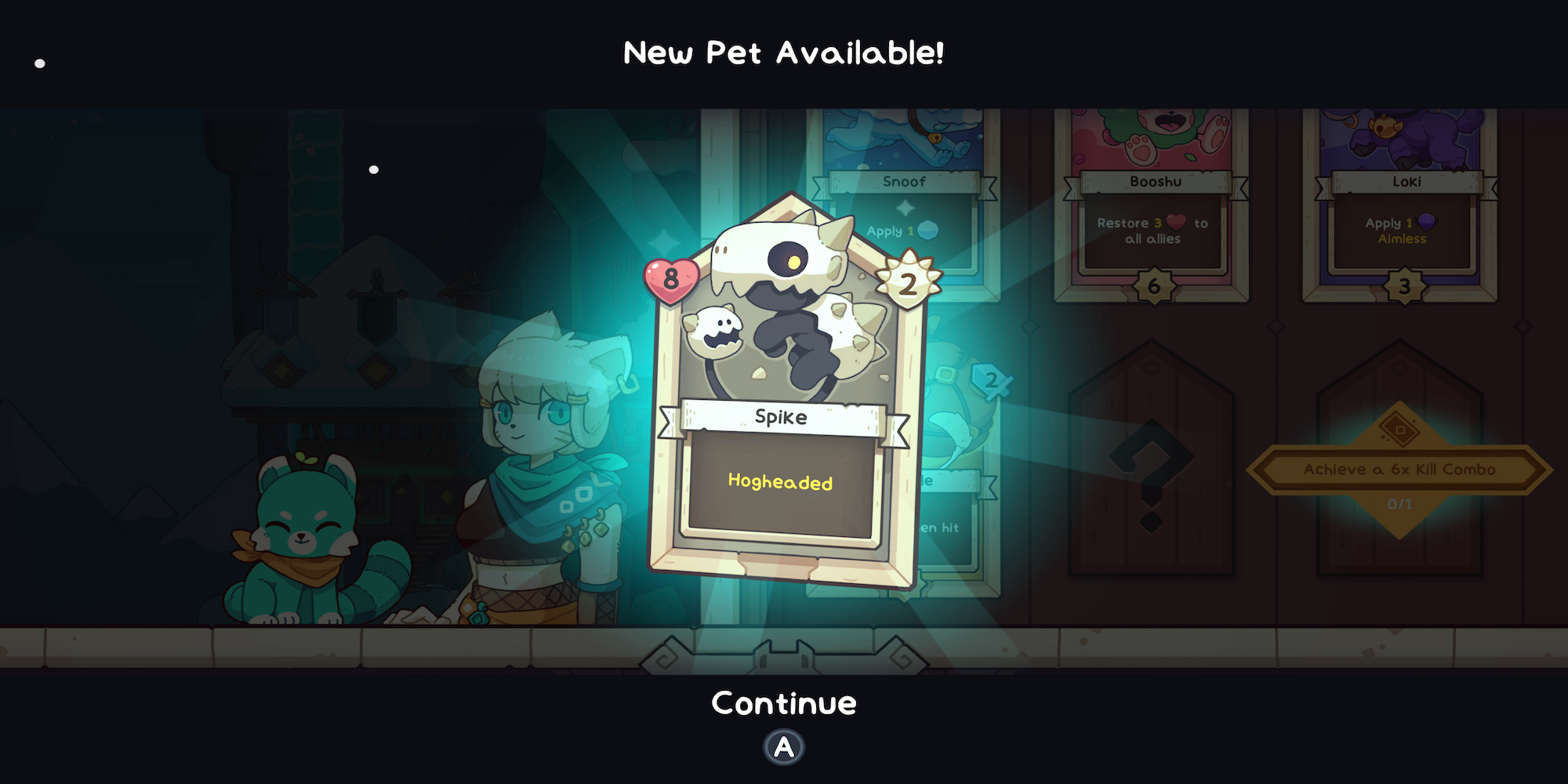
The fact that you can’t choose what to concentrate your achievements on to what best suits you at the time is a little disappointing. As well as challenges to unlock certain charms or new cards being few and far between when you’re learning the ropes. It feels unforgiving and unrewarding outside of your initial runs and it does force you to look more inward to grant success. I’ve mentioned charms a couple of times, these are usually a per run equippable that you put on your card. They buff different stats depending on what you can get and obviously the harder challenges grant you better charms to use.
They’re also found on the map when you’re on your run. Every run starts with a battle then it goes to a map view where there are two different paths to take. Usually, you’ll be picking between a charm or a new companion card that fights alongside you or money to spend at a shop that’s also on the path. You can only hold a certain amount of champions and there’s also a ‘Muncher’ that will eat your cards, for veterans to card games with RNG, this mitigates getting random hands that won’t be effective in battle. The map view is probably the least polished aspect, but it’s seconds of your time.
Adventure Climb
The screenshots in the review as well as the trailer show it already, but the art design from Gaziter is a perfect element in Wildfrost. It’s a cutesy Adventure Time-like aesthetic that really cuts through the frustration of the hard gameplay. I can’t stay angry at my failures when cards like Naked Gnome show up in battle. The art style is expertly crafted going beyond just making the game look good, it develops a tone synonymous with the gameplay that compliment each other greatly.

The music from Paul Zimmermann multiplies that relationship between style and game by fitting into the world so well. I saw that Paul tweeted that the music was inspired by the instruments Gaziter designed and I love that, it makes sense when Wildfrost is such a cohesive package. The folksy orchestra with a blood-pumping Shamisen leading the charge when you’re in a battle adds a grandiose scale to every fight and really gets stuck in your head.
Read ’em and Weep
Do I wish Wildfrost guided me for a little while longer? Yes. Do I wish the learning curve wasn’t akin to Everest? Yes. The game does a disservice to itself by letting the player discover what works if that pin doesn’t drop for hours. At first, I couldn’t help but begrudge the games balancing for putting me through the wringer; it might be a completely different game but it’s an easy comparison to my first soulslike – Bloodborne.
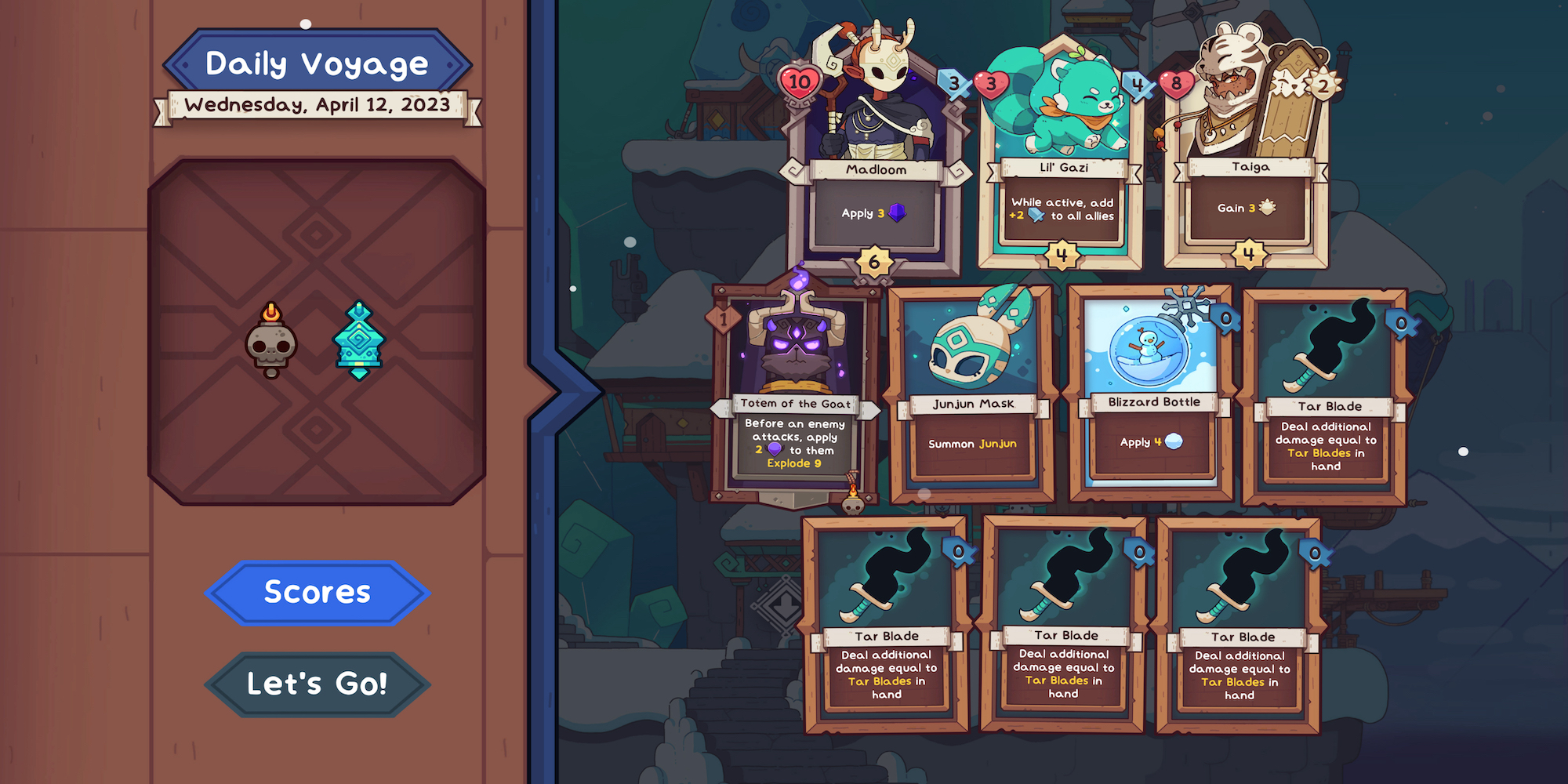
Once everything clicks, it clicks and I’m glad I had the blind confidence in Wildfrost to persevere because the core gameplay is a blast. I do think if the challenges came a little easier and progression was a bit more tailored to the player it’d make for a better beginning. However, I’ve definitely found myself a game that’ll last by going on the odd run thanks to the daily challenges that only increase the replayability. And when the addictive base gameplay pairs so well with the awesome presentation, it’s worth playing even if you’re not into deckbuilding games.
Sleek presentation and engrossingly deep gameplay makes Wildfrost a distinctive roguelike deckbuilder. It’s a brutal learning curve that might snow you in, but if you persevere and learn you’ll have an overall great time with the game.

Wildfrost is out now on Nintendo Switch (review platform) and PC via Steam.
Developer: Deadpan Games, Gaziter
Publisher: Chucklefish
Disclaimer: In order to complete this review, we were provided with a promotional code from the publisher. For our full review policy, please go here. If you enjoyed this article or any more of our content, please consider our Patreon.
Make sure to follow Finger Guns on our social channels. Twitter, Facebook, Twitch, Spotify or Apple Podcasts – to keep up to date on our news, reviews and features.

